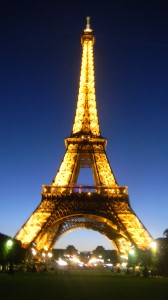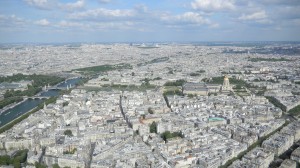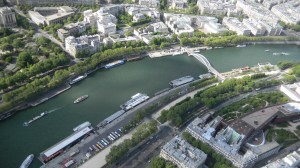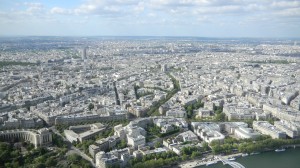From the Great Pyramid to the Eiffel Tower, Westerners have often liked to define themselves with towering abstract forms.
But the Eiffel Tower has inspired perspectives that the Great Pyramid’s builders probably never dreamed of.
Rising to just under 1,000 feet when it was finished in 1889, The Eiffel Tower was almost twice as high as the Washington Monument (555 feet), which used to be the world’s tallest building. This increase is more dramatic than most people think because the Eiffel Tower is a secular building with an observation deck at the top. For the first time in world history, the general public could view the streets their perspectives had been bound to from celestial heights. The Eiffel Tower helped usher a revolution in the way people saw the world.
Several things happened over the next 20 years that brought people beyond the classic 3 dimensional perspective of the world within a fixed framework, which Italian Renaissance painting and Newtonian physics encouraged:
1. The telephone became a consumer product, and it allowed people in different places to hear each other.
2. Einstein published his classic paper on special relativity in 1905. It abolished the idea of a universal fixed frame of reference for all things because the speed of time and the appearance of things change for an object approaching the speed of light. The 4th dimension (velocity) effects the other three. Appearances are thus relative.
3. Sigmund Freud published his Interpretation of Dreams in 1899, which asserted that our conscious thoughts are heavily influenced by unconscious drives–there’s a lot beneath the surface of our rational 3 dimensional worlds that we’re afraid to be aware of.
4. Pablo Picasso exhibited his first cubist paintings, which juxtapose several incongruent frameworks. Floodgates opened, and many modern artists indulged their imaginations beyond 3 dimensional frameworks. Marcel Duchamp painted his Nude Descending a Staircase in 1911 (which looks like a motion picture, with many still photos juxtaposed on each other) before he pioneered surrealistic art. Wassily Kandinsky painted completely abstract works, which didn’t represent anything in the world.
Robert Delaunay is one of my favorite modern painters. Many of his works show Paris with forms so distorted that they’re nearly abstract. The Eiffel Tower bends and twists in several. But Delaunay’s colors are usually soft–his distortions are playful and whimsical rather than violent. The Parisian imagination in full bloom.
All these movements converged at the beginning of the 20th century to create both anxiety about the basis of reality, and freedom to venture past long-held conventions and create new realities.
The Eiffel Tower was there first. From the outside, it looks like a beautiful abstract form. But its upper platform was the first place where thousands of people saw views that transcended forms and freed the imagination. This is not your father’s pyramid.





Comments on this entry are closed.